‘One of Kholodenko’s two most notable qualities as a pianist are his stunning ringing tone, which allows him to leave notes hanging in the air longer than the physics of acoustics would suggest is possible. The other is an opposite crisp and spectacular digital speed.’
Los Angeles Times
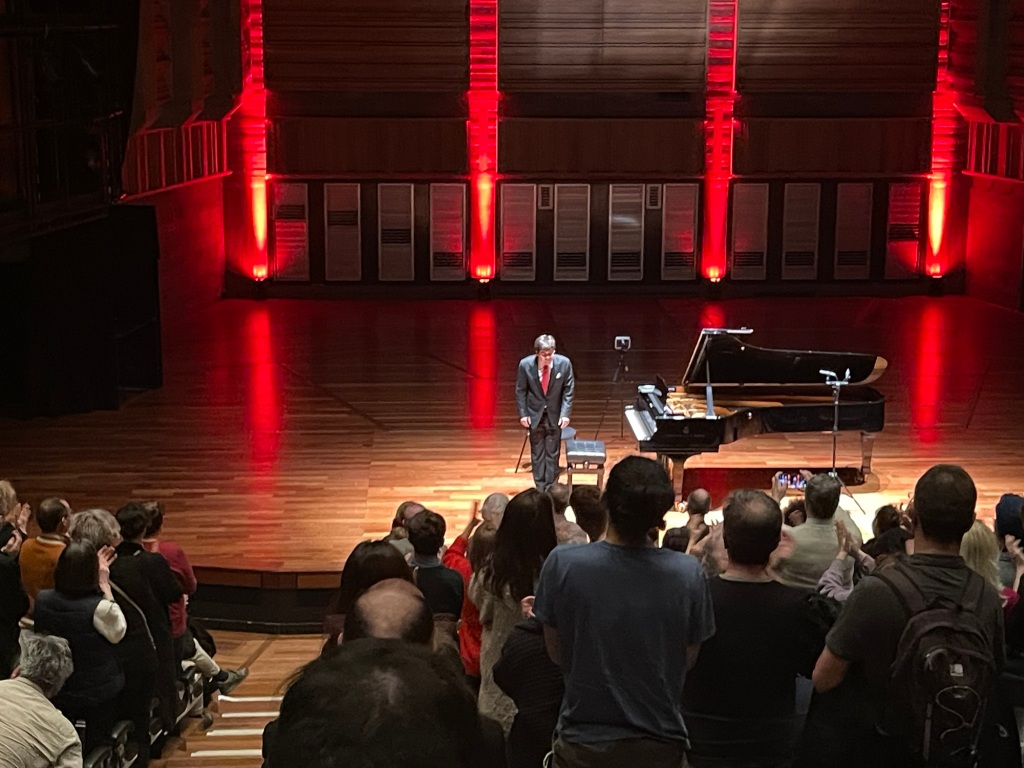
‘Vadym Kholodenko’s ear-tickling trills and textural transparency … set the stage for the intimate, subtle and crisply detailed playing to come’Gramophone
The virtuoso pianist presents an unusual recital of two halves: Mozart’s Requiem transcribed for piano and Rzewski’s resistance anthem.
Winner of the 2014 Van Cliburn International Piano Competition, the Ukrainian pianist Vadym Kholodenko devotes his concert to two vast, extraordinary works – spanning a narrative from grief to resistance that connects deeply with the spirit of his home country.
He performs Mozart’s Requiem in a little-known, grand-scale transcription by Karl Klindworth, a pupil of Franz Liszt, who managed to encapsulate the beauty and magnificence of the work for chorus and orchestra on the piano alone.
The recital’s other half consists of Frederic Rzewski’s 36 Variations on ‘The People United Will Never Be Defeated!’, the American composer’s ear-boggling transformation of Sergio Ortega’s Chilean resistance anthem.
This truly iconic piece has become the late 20th century’s successor to the giant variation sets of Beethoven and Bach.

Standing ovation for a true ‘tour de force’ of multifaceted playing of prismatic colour and total mastery by Vadym Kholodenko
Klindworth’s transcription of Mozart appeared rather dated compared to the extraordinary vivid and vital Rzewski variations on ‘The People United Will Never Be Defeated’ .How actual can that be as the bombs fall on the cradle of Cristian civilisation last night .
‘An eye for an eye and tooth for a tooth when will it ever end!’
These were the last words my wife declaimed on stage as Electra by Euripides before being struck down by an aneurysm – the silent killer on the stage of our own theatre in Rome!
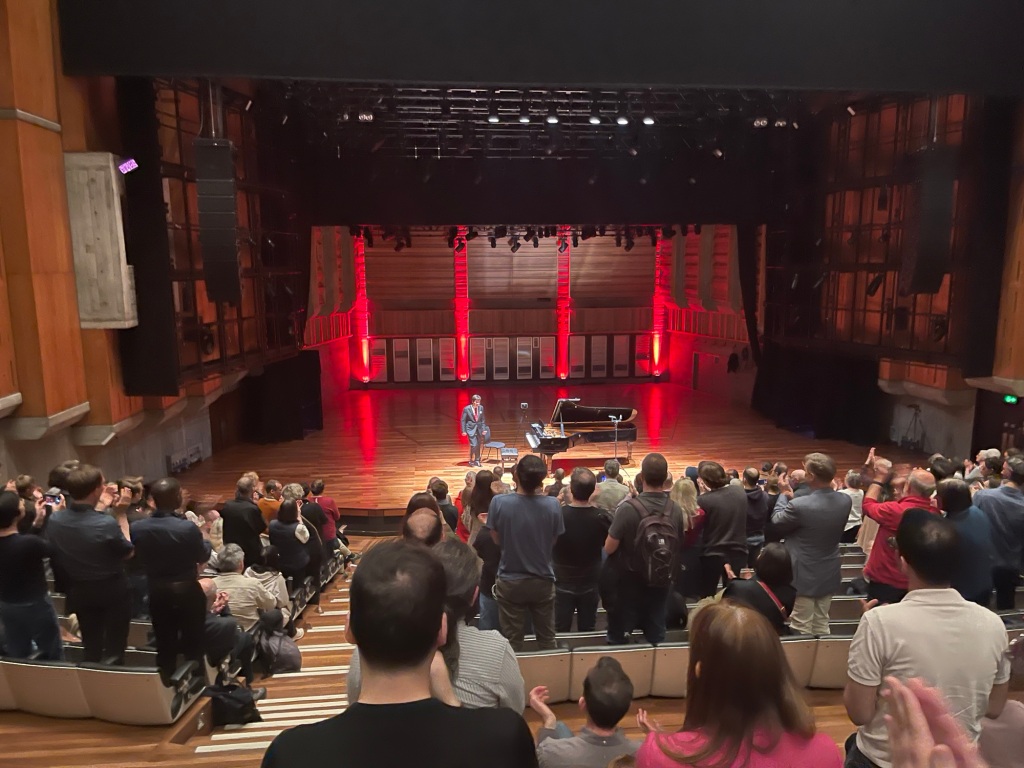
Exhilarating and quite exhausting performance from a master pianist.
Commissioned and first performed in 1975 by Ursula Oppens who passed by Siena to play to Agosti in 1968 before catching the train to Bolzano where she won the Busoni Competition.
Kholodenko ,winner of Van Cliburn , with courage and resiliance can really show us what it means ‘never to be defeated’.
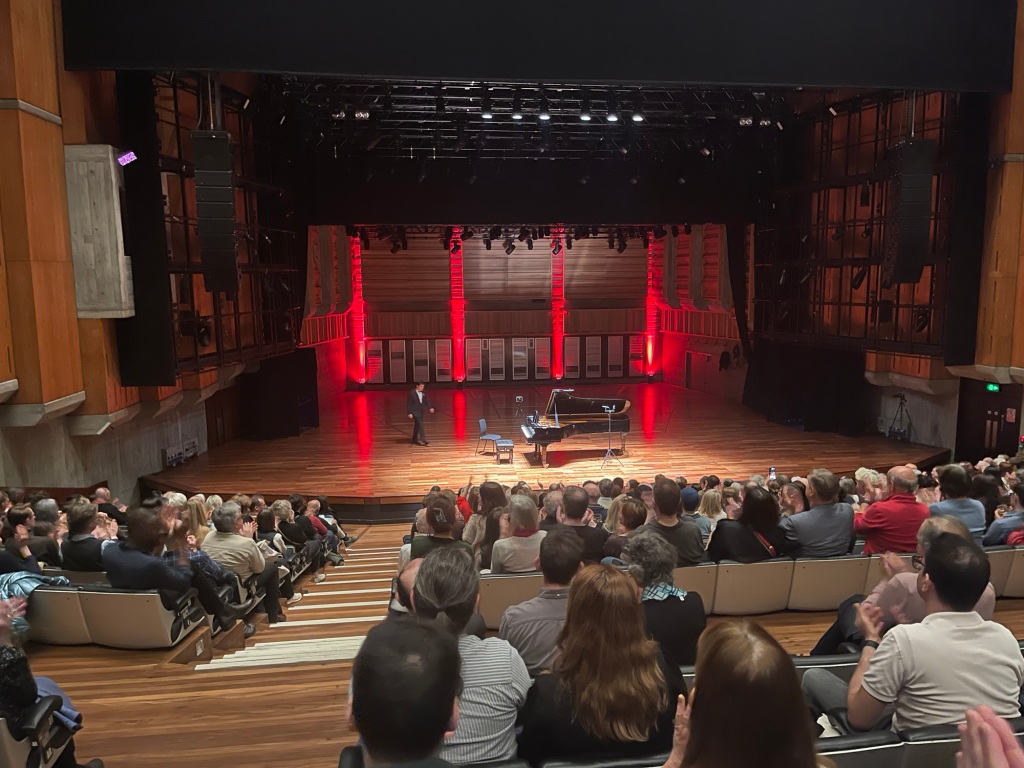
This is an interview with Ursula Oppens : https://m.youtube.com/watch?v=uuarpS_u59Q.
And to Jed Distler’s Between the Keys : https://soundcloud.com/jeddistler/episode-0032-the-people-united-at-40-2015-11-03?in=jeddistler/sets/between-the-keys-archive
The song on which the variations is based is one of many that emerged from the Unidad Popular coalition in Chile between 1969 and 1973, prior to the overthrow of the Salvador Allende government. Rzewski composed the variations in September and October 1975, as a tribute to the struggle of the Chilean people against the newly imposed repressive regime of Augusto Pinochet ; indeed the work contains allusions to other leftist struggles of the same and immediately preceding time, such as quotations from the Italian traditional socialist song “Bandiera Rossa “ and the Bertold Brecht /Hans Eisler “Solidarity Song”
In general, the variations are short, and build up to climaxes of considerable force. The 36 variations, following the 36 bars of the tune, are in six groups of six. The pianist, in addition to needing a virtuoso technique, is required to whistle, slam the piano lid, and catch the after-vibrations of a loud attack as harmonics: all of these are “extended” techniques in 20th-century piano writing. Much of the work uses the language of 19th-century romanticism, but mixes this language with pandiatonic tonality, modal writing, and serial techniques .
As in the Goldberg Variations , the final variation is a direct restatement of the original theme, intended to be heard with new significance after the long journey through the variations.

Jeremy Chan’s review of the concert can be read here :https://literallylefthanded.com/2024/04/14/vadym-kholodenkos-core-shaking-rzewski-variations/

April 13, 1938 Westfield Massachusetts USA
June 26, 2021 (aged 83) Montiano Italy
Rzewski was born on April 13, 1938,to parents of Polish and Jewish descent,and raised Catholic.[He began playing piano at age 5 and attended Phillips Academy Harvard and Princeton , where his teachers included Randall Thompson,Roger Sessions,Walter Piston and Milton Babbitt . In 1960, he went to Italy on a Fulbright Scholarship where in addition to studying with Luigi Dallapiccola in Florence he began a career as a performer of new piano music, often with an improvisatory element.
In 1966, Rzewski co-founded Musica Elettronica Viva with Alvin Curran and Richard Teitelbaum in Rome which was conceived music as a collective, collaborative process, with improvisation and live electronic instruments prominently featured. In 1971, he returned to New York from Italy.
In 1977, Rzewski became Professor of Composition at the Conservatoire Royal de Musique in Liège, Belgium, then directed by Henri Pousseur
In 1963, Rzewski married Nicole Abbeloos; they had five children.While Rzewski never divorced Abbeloos, his companion for about the last 20 years of his life was Françoise Walot, with whom he had two children. He also had five grandchildren.Rzewski died of an apparent heart attack in Montiano Tuscany on June 26, 2021, at the age of 83.Nicola Slonimsky said of Rzewski in 1993: “He is furthermore a granitically overpowering piano technician, capable of depositing huge boulders of sonoristic material across the keyboard without actually wrecking the instrument.”Michael Schell called Rzewski “the most important living composer of piano music, and surely one of the dozen or so most important living American composers”.
Rzewski plays ‘The People United Will Never Be https://youtube.com/watch?v=xiWwYsWWVSk&feature=shared
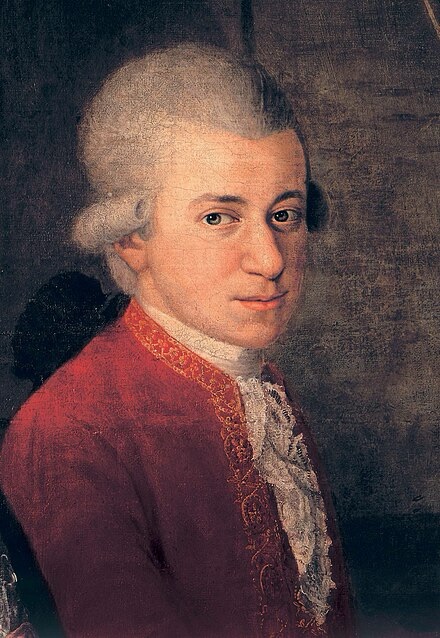
Wolfgang Amadeus Mozart
27 January 1756 Salzburg – 5 December 1791 (aged 35) Vienna


The beginning of the Dies irae in the autograph manuscript, with Eybler’s orchestration. In the upper right, Nissen has left a note: “All which is not enclosed by the quill is of Mozart’s hand up to page 32.” The first violin, choir and figured bass are entirely Mozart’s.
At the time of Mozart’s death on 5 December 1791, only the first movement, Introitus (Requiem aeternam) was completed in all of the orchestral and vocal parts. The Kyrie, Sequence and Offertorium were completed in skeleton, with the exception of the Lacrymosa, which breaks off after the first eight bars. The vocal parts and continuo were fully notated. Occasionally, some of the prominent orchestral parts were briefly indicated, such as the first violin part of the Rex tremendae and Confutatis, the musical bridges in the Recordare, and the trombone solos of the Tuba Mirum.What remained to be completed for these sections were mostly accompanimental figures, inner harmonies, and orchestral doublings to the vocal parts.
The eccentric count Franz von Walsegg commissioned the Requiem from Mozart anonymously through intermediaries. The count, an amateur chamber musician who routinely commissioned works by composers and passed them off as his own,wanted a Requiem Mass he could claim he composed to memorialize the recent passing of his wife. Mozart received only half of the payment in advance, so upon his death his widow Costanze was keen to have the work completed secretly by someone else, submit it to the count as having been completed by Mozart and collect the final payment.Joseph von Eybler was one of the first composers to be asked to complete the score, and had worked on the movements from the Dies irae up until the Lacrymosa. In addition, a striking similarity between the openings of the Domine Jesu Christe movements in the requiems of the two composers suggests that Eybler at least looked at later sections.After this work, he felt unable to complete the remainder and gave the manuscript back to Constanze Mozart.
The task was then given to another composer, Franz Xaver Süssmayr who borrowed some of Eybler’s work in making his completion, and added his own orchestration to the movements from the Kyrie onward, completed the Lacrymosa, and added several new movements which a Requiem would normally comprise: Sanctus, Benedictus, and Agnus Dei. He then added a final section, Lux aeterna by adapting the opening two movements which Mozart had written to the different words which finish the Requiem Mass, which according to both Süssmayr and Mozart’s wife was done according to Mozart’s directions. Some think it unlikely, however, that Mozart would have repeated the opening two sections if he had survived to finish the work.The completed score, started by Mozart but largely finished by Süssmayr, was then dispatched to Count Walsegg complete with a counterfeited signature of Mozart and dated 1792. The various complete and incomplete manuscripts eventually turned up in the 19th century, but many of the figures involved left ambiguous statements on record as to how they were involved in the affair. Despite the controversy over how much of the music is actually Mozart’s, the commonly performed Süssmayr version has become widely accepted by the public. This acceptance is quite strong, even when alternative completions provide logical and compelling solutions for the work..
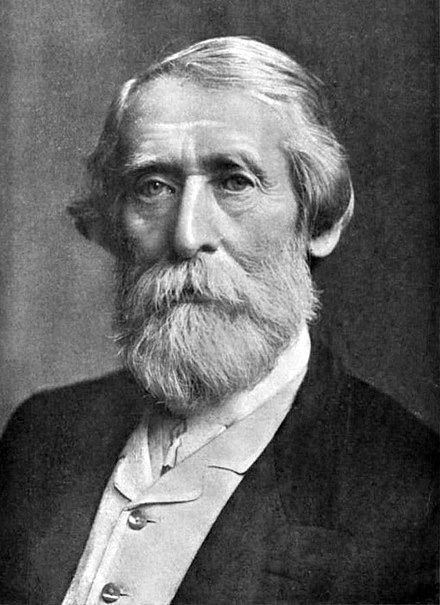
Karl Klindworth (25 September 1830 – 27 July 1916) was a German composer, virtuoso pianist, conductor, violinist and music publisher. He was one of Franz Liszt’s pupils and later one of his closest disciples and friends, being also on friendly terms with Richard Wagner , of whom he was an admirer. He was highly praised by fellow musicians, including Wagner .
As a child, the young Klindworth received violin lessons and taught himself to play the piano. As he was not accepted as violin pupil of Louis Spohr, he then joined a traveling theater company as a successful violinist and conductor when he was only 17. In 1850, he took over the leadership of the Neue Liedertafel in Hanover. In the summer of 1852, Klindworth went to Weimar where he took piano lessons from Liszt and was soon one of his closest disciples and friends.He also became on friendly terms with Richard Wagner
In 1854, Klindworth went to London,where he remained for fourteen years, studying, teaching and occasionally appearing in public.From London Klindworth went to Moscow in 1868, following Nikolai Rubinstein’s invitation to take up the position of professor of pianoforte at the Moscow Conservatory where he first met Tchaikowsky as professor of harmony.While in Russia, he completed his piano arrangements for Wagner’s Der Ring des Nibelungen , which he had begun during Wagner’s visit to England in 1855, Beethoven’s sonatas and also his critical edition of Chopin’s works.He then became conductor of the Berlin Philharmonic in 1882, in association with Joseph Joachim and Franz Wüllner , being also the conductor of the Ber5lin Wagner Society. At this time, he established the Klindworths Musikschule, which later became the Klindworth – Scharwenka Conservatory
Klindworth remained in Berlin until 1893, when he retired to Potsdam, practicing as a teacher.He earned his great reputation as an editor of musical works, having re-orchestrated Chopin’s second piano concerto, adopted and raised Winifred Williams to be a perfect “Wagnerite” and made the orchestration of the first movement of Alkan’s solo piano concerto,the eighth of the composer’s etudes in all the minor keys.
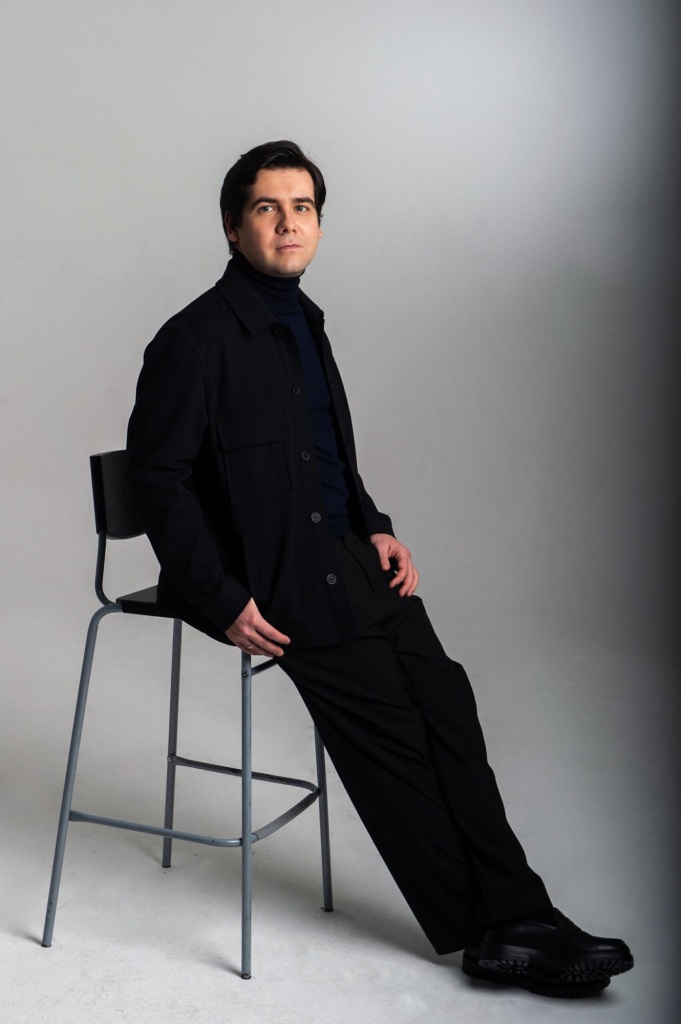
Combining fierce pianism, an unrivalled breadth of repertoire, and a level of interpretative refinement that ascends to the realms of poetry, Vadym Kholodenko rises as an artist the likes of which the world has rarely seen since the great pianists of the Golden Age.
Gold Medallist of the Van Cliburn International Piano Competition, Kholodenko’s distinguished pianism and profound artistic gifts have led to invitations from many of the world’s finest orchestras and concert halls.
Highlights include concerto performances with leading orchestras of North America (Atlanta Symphony, Cincinnati Symphony, Indianapolis Symphony, and the Philadelphia Orchestra); Europe (Accademia Nazionale di Santa Cecilia, Danish National Symphony, London Philharmonic, Orchestra Sinfonica di Milano G. Verdi, and the Orquesta Nacional de España); and Asia & the Far East (National Symphony Orchestra of Taiwan, Sydney Symphony Orchestra, and the Tokyo Metropolitan Symphony Orchestra). He has held the position of Artist-in-Residence with the Fort Worth Symphony Orchestra (Texas, USA) and the SWR Sinfonieorchester (Stuttgart, Germany).
Kholodenko has forged strong musical partnerships with many of the world’s leading conductors, and has had the pleasure of collaborating with such conductors as Karina Canellakis, Myung-Whun Chung, Cristian Măcelaru, Gemma New, Sir Antonio Pappano, Dima Slobodeniouk, Thomas Søndergård, Krzyzstof Urbański, and Kazuki Yamada, amongst others.
In recital, Kholodenko appears on the world’s leading stages – from London, Paris, and Vienna, to Boston, Chicago, and New York – where he is praised for his “iron-clad technique, capable of moments of crystalline delicacy” (The Guardian). He is also a thoughtful and committed chamber musician, enjoying rewarding collaborations with an array of such artists as Clara Jumi-Kang, Anastasia Kobekina, Vadim Repin, and the Belcea and Jerusalem string quartets. He has made numerous recordings with violinist Alena Baeva, with whom recent and forthcoming appearances include concerts in the cultural capitals of Florence, London, and Paris.
Possessing an extraordinary facility for the assimilation of music, the sheer scale of of Kholodenko’s knowledge and command of the piano literature is unrivalled, and he holds a vast array of active repertoire. His discography to date encompasses solo piano works by a diverse list of composers (J.S. Bach, Balakirev, Beethoven, Chaplygin, Kurbatov, Liszt, Medtner, Prokofiev, Rachmaninov, Rzewski, Schubert, Scriabin, Siloti, Stravinsky, and Tchaikovsky, amongst others). Recordings for the Harmonia Mundi record label include the Grieg Piano Concerto, Saint-Saëns Piano Concerto No.2, and the complete cycle of Prokofiev’s piano concertos.
Kholodenko’s recordings have been described as “truly outstanding” (Gramophone Magazine), and received such accolades as Editor’s Choice Award (BBC Music Magazine), and the much-coveted Diapason d’Or de l’année. His latest release – a pairing of Beethoven’s Diabelli Variations and Rzewski’s The People United Will Never Be Defeated! for the Quartz Music label (2022) – met with tremendous critical acclaim, described as “carefully contoured and impactful” (BBC Music Magazine), and “playing that pulls no punches: Kholodenko is in the elite of classical pianists” (Norman Lebrecht, for The Critic).
Born in Kyiv, Ukraine, Vadym Kholodenko took his first piano lessons at the age of six, and began touring internationally at thirteen years old. He was educated at the Kyiv Lysenko State Music Lyceum and the Moscow State Tchaikovsky Conservatoire, under the renowned pedagogues Natalia Gridneva, Borys Fedorov, and Vera Gornostaeva. He won First Prize at the Sendai International Piano Competition (2010) and Schubert International Piano Competition (2011), before taking the Gold Medal at the Van Cliburn International Piano Competition (2013). He is now resident in Luxembourg.